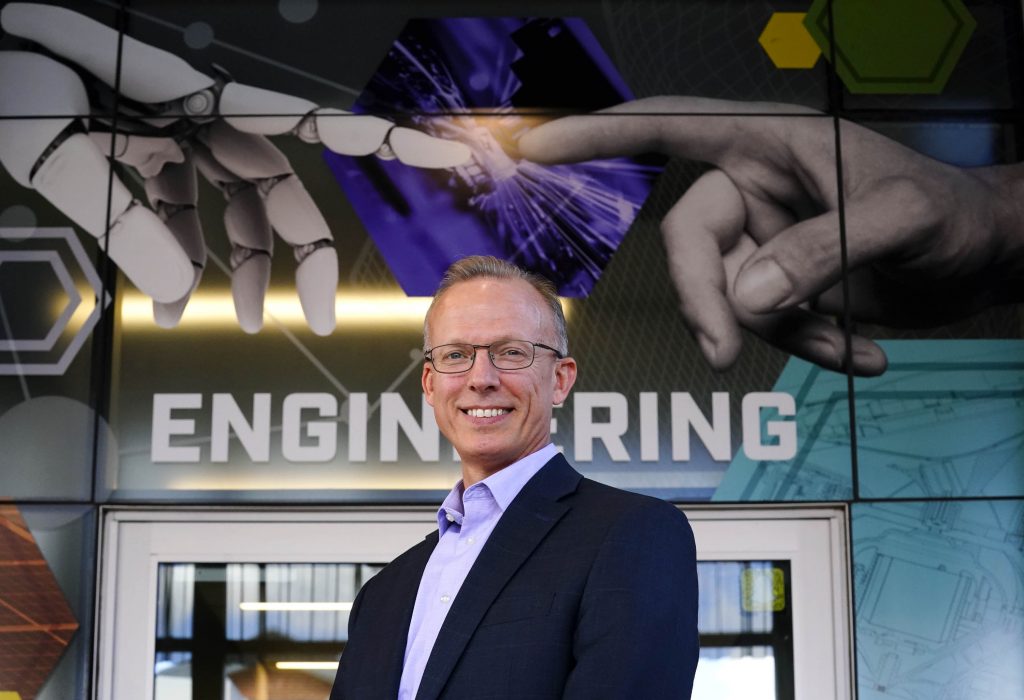
EDITOR'S NOTE: This story originally appeared in the November issue of GCU Magazine. Digital version
When Paul Lambertson was 10 years old, he knew what he wanted to do: He wanted to be Captain Kirk.
So a few years later, it was off to the Air Force Academy and a 20-year career as a military pilot, followed by 13 years as an executive with Boeing. Now after retiring, twice, he has embarked on another adventure: leading GCU’s College of Engineering and Technology, which became its own college this year after the College of Science, Engineering and Technology split into CET and the College of Natural Sciences.
1. To quote Dr. Seuss, “Oh the places you’ll go!” Where have you gone, beyond your recent move from Huntsville, Alabama, to Phoenix? I was born in Boston, lived in Pennsylvania until I was about 8½. I grew up in South Florida – I was there until I turned 18 – went to the Air Force Academy and moved all over with the Air Force for 20 years. … We circumnavigate the globe often (in the military), so while I haven’t been permanently stationed outside of the United States, my assignments have taken me everywhere.
2. What’s the coolest place you’ve been? Are you ready for a dad joke? Literally, I’ve been on every continent. You know what they say about flying a mission to Antarctica? It’s cool! … The most interesting place that I have been is to McMurdo Sound in McMurdo, which is the United States station in Antarctica. It is remarkable. One of the funniest things is you go in, you walk around, and you go to the cafeteria, you do all the cool things that you can do, then you go into the gift store and buy a penguin that was made in China.
3. What did your job entail in the Air Force? I had seven different career fields (in the Air Force), and one of them was pilot. I flew seven different airplanes. But my primary flight duty was as a mobility pilot, and almost all mobility aircraft can be converted to carry patients. Most of my flight time was in the C-17, where you can transform the cargo compartment to carry nearly 30 litters (stretchers) or about 100 ambulatory patients and a complete medical crew. One of these missions (medivac of Marines from war-torn Monrovia, Liberia) took two jets and crews, multicountry engagements and super long hours, but our efforts helped save two lives. The story even made The New York Times. On another mission, we even got to help save a baby’s life. It’s just that kind of stuff – being able to be a part of a chain of events that saves lives.
4. You ran the Systems Engineering Program at the Air Force Academy and were the Enterprise Product Standards leader for Boeing. Why teaching? You asked what was the coolest place I’ve ever been to. But I think I would say, what’s the most important thing I’ve ever done – aside from being a dad and husband. Short of being in the chain of events to save a human life, which is a pilot flying a large airplane in hospital mode, the most meaningful thing I have ever done in the Air Force is teach cadets. I love to teach.
5. Your mom is a 40-year educator, and you’ve been an educator, too. Why GCU? I think we’re losing our country. … To me, coming here is God saying I want you back in the fight. Now you get to be back on the front lines helping mold young minds. That it’s OK to have conversations. It’s OK to be a Christian. It’s kind of cool, actually. … My thing is integration. I’m a dot-connector. I’ve done it in the military. I’ve done it in business. It’s just what I do. It’s a passion.















